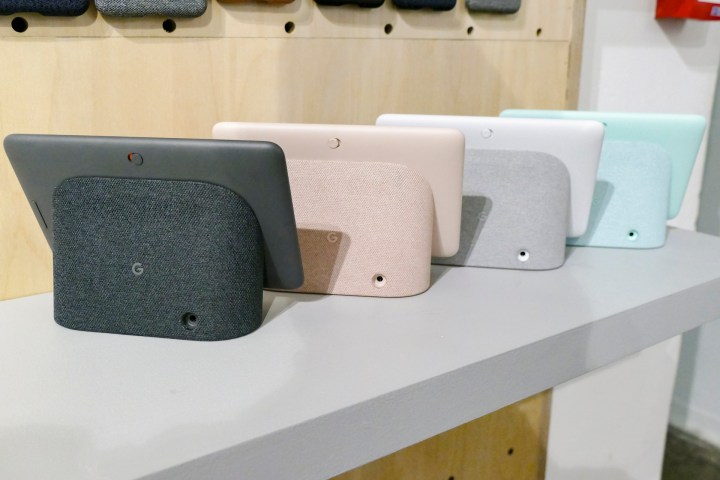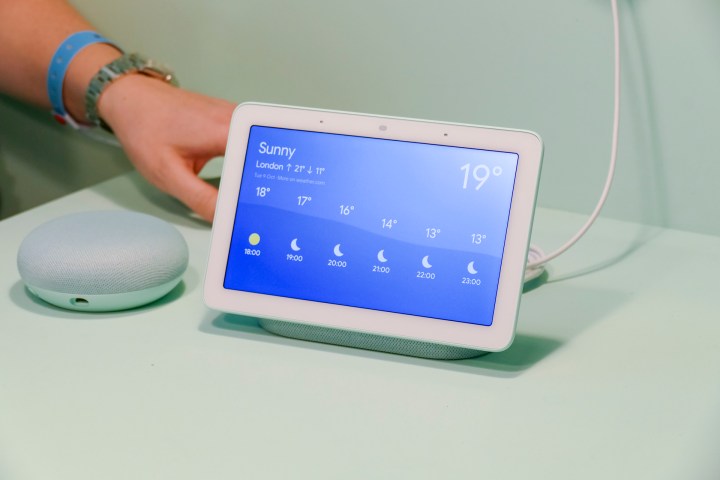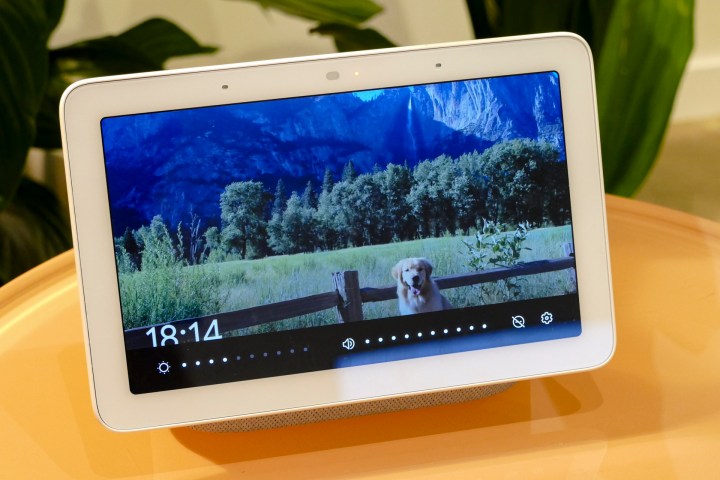
It’s official: The Google Home Hub, a smart speaker with a screen, is here, and it enters into a smart display market that is getting very crowded lately. Everyone seems to want to sell you a screen for your counter. Even Facebook is in the game with the Portal and Portal+, two smart displays you can use to talk to your friends on the social media platform.
But while other manufacturers are adding bells and whistles like large, 10-inch crystal clear displays, built in smart home hubs, roving cameras, and stellar sound, Google surprisingly has kept it simple with its Home Hub. No huge screen like Facebook’s Portal+ 15-inch display. No built-in Zigbee smart hub like the Amazon Echo Show. No incredible sound like the JBL Link View. Just a simple, seven-inch touch display, which is now available for pre-order at a very reasonable cost of $149.
I can see why people feel creeped out — there are many examples of things going wrong with cameras in people’s homes.
Don’t get me wrong: Under the hood, the Home Hub is impressive. It’s powered by Google Assistant voice technology. You can answer your Nest Hello video doorbell straight from the device. It comes with six months of YouTube Premium for free, a clear swipe at Amazon (Echo Show users can’t access YouTube due to an ongoing feud with the Google-owned company).
But perhaps the most intriguing thing about the Home Hub is what it doesn’t have: a camera. It’s a departure from the trend, as pretty much every smart display on the market has one. That means that you can’t make video calls via Google Duo, Skype, or any other platform on the Home Hub. But it also means that you don’t have to be worried that Big Brother — or the creepy hacker next door — is watching you.
While I initially questioned Google’s logic when I heard about this, now that I’ve had a chance to think about it, it’s a refreshing change. Not having a camera in a smart display is a good thing, and here’s why.
No camera = Fewer privacy concerns
I have many friends who flat out refuse to buy any kind of smart speaker. They’re shocked to know that I have several of them in my house (for testing purposes as part of my job). They’re even more dismayed to learn that I have one with a screen.

“Aren’t you worried about privacy?” They ask me. I explain that I test out smart speakers and smart displays for work, but that even so, the idea of having the devices in my home doesn’t bother me.
I can see why people feel creeped out, though. There are many examples of things going wrong with cameras in homes, like baby monitors and security cameras being hacked. Studies like this one show that as many as 50 percent of smart speaker users are worried about privacy. And this study focused on the people who already own a smart speaker, not people who just flat out refuse to put one in their homes in the first place due to privacy concerns.
I had concerns. In this hackable day and age, you never know what can happen. And it’s in my room. By my bed.
If you Google “smart speaker privacy concerns,” you’ll get oodles of articles where devices, always listening, have encroached on people’s privacy in strange ways. One notable incident involved a Portland, Oregon, couple, who discovered that Alexa recorded a home conversation and then sent it to a contact without their permission.
With the Google Home Hub, Google has eliminated some of the concerns about the collection and exposure of our private information, at least on the video front. Google is smart to listen to those folks worried about hacks and unauthorized information collected about us. While the chances of a home device with a camera being hacked is small, losing the camera on such a device shows me that Google is listening when it comes to our concerns about privacy.
Home Hub in your bedroom or bathroom?
There’s another class of people straddling the smart home fence: Those who might be OK with putting a smart display with a camera in a kitchen (where everyone typically keeps their clothes on), but who might not be comfortable with such device in the bedroom. The camera-less, smaller Google Home Hub eliminates this concern and will make people more comfortable using it in any room in the house.

When the Amazon Echo Spot was introduced, it was billed as a cute little alarm clock replacement for your nightstand. I liked the device but had concerns about putting it next to my bed, even with the camera turned off in the app. Why? Because in this hackable day and age, you never know what can happen. And it’s in my room. By my bed. You understand what I’m saying.
Most folks are still making regular voice-on-voice phone calls.
Google purposefully made the Home Hub smaller than a Lenovo Smart Display or Echo Show, and that means that it can actually fit on a nightstand if you want to put it there. And you can put it there without worrying about a camera being in the bedroom like the Amazon Echo Spot.
Heck, you could even put it in your bathroom if you wanted, without the fear of a camera somehow getting turned on. That makes it more versatile, and that makes me feel better about having the device in my home. I’m sure others will feel that way, too.
Cameras in smart displays aren’t really necessary anyway
The biggest argument I’ve heard in favor of putting a camera in a smart display is that it allows you to make video calls, which can be genuinely useful. My husband, son, and I often chat when he’s out of town through the Amazon Echo Show on our kitchen counter.

But as far as I can tell, video chatting is still the exception to the norm, meaning that most regular folks are still making regular voice-on-voice phone calls. Skype or Google Duo calls are reserved for occasional connections with grandma, assuming everyone knows how to use the technology.
And even when video calling is happening, it’s typically through done through our smart phones, tablets, or laptops. There’s a reason land lines are disappearing: Hardly anyone is gathering around the phone, or in this case, the smart display, to talk on the phone.
I’d be willing to bet that the majority of people who own smart displays are not using them to video chat.
Furthermore, not enough people have smart displays to make a camera on the devices an absolute necessity. It’s true that if you have an Alexa device with a screen and the recipient of your call does, too, you can have a nice video chat. But I have an Echo Show, and I don’t know a single one of my friends who has one. Even if I did, it might be weird if I just dropped in on them.
Maybe that will change, but for now, I’d be willing to bet that the majority of people who own smart displays are not using them to video chat very often. And to be honest, I don’t know if they ever will.
Google is clearly listening to consumers about privacy. For anyone put off by its recent security fiasco, that might be reason to reconsider buying a smart display. And in a tech world increasingly dominated by more bells and whistles, not less, it’s nice to see that Google had the fortitude to hold back a bit. Just because you can do something doesn’t mean you should.


